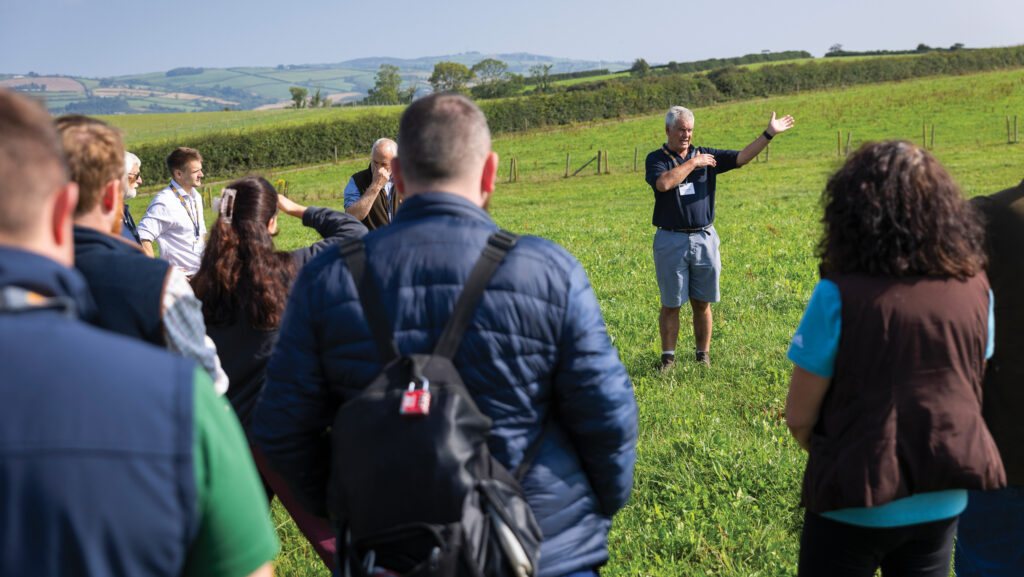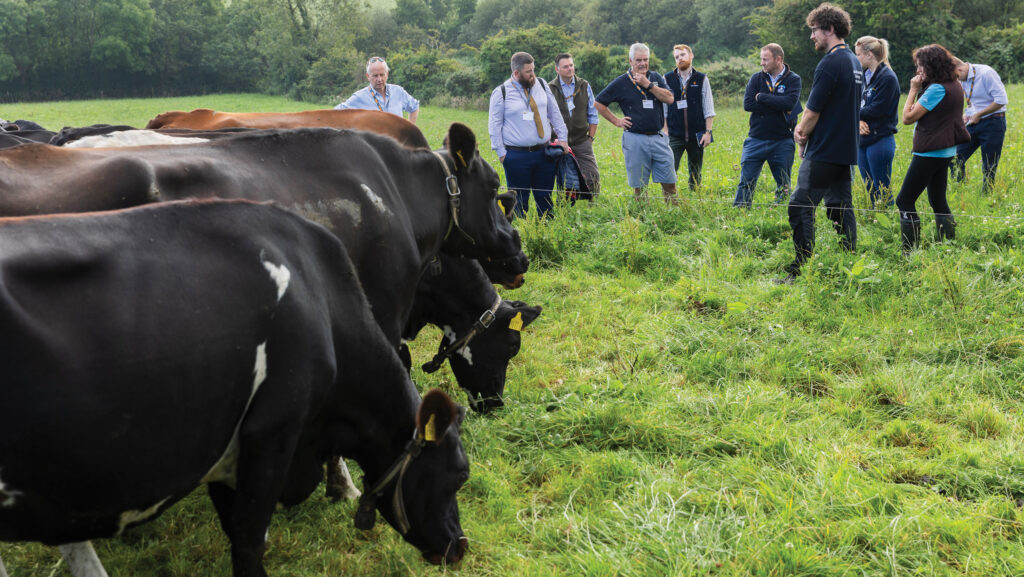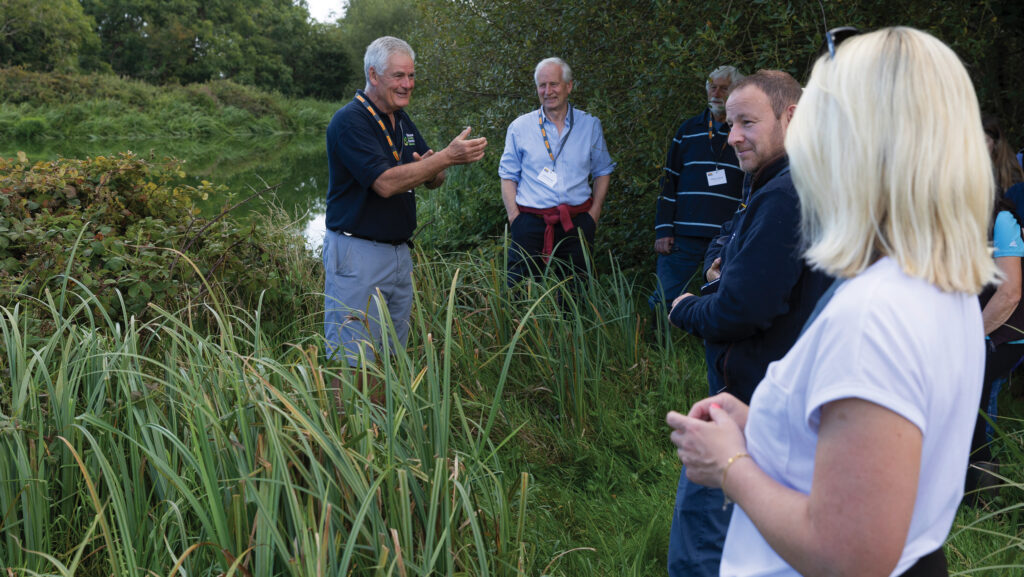Grassland dairy unit adopts low-input strategy
 © Paul Lindsay
© Paul Lindsay Dairy farmer Tim Morrow provided an insight into his low-input grazing system and nature-friendly farming methods during a Transition farm walk in Northern Ireland.
Farmers, agricultural advisers and supply chain specialists recently attended a Farmers Weekly Transition project farm walk at Streamvale Farm, near Belfast.
See more: How farms are generating income from the environment

© Paul Lindsay
The farm uses a multispecies herbal ley made up of two clovers, plantain, chicory, timothy, and perennial rye grass.
TIm is part of the Nature Friendly Farming Network and uses very little pesticide on farm and no nitrogen at all.
The land is no longer ploughed – instead, fields are disced several times at about 25mm deep and then rolled. Seeds are then broadcast before it is rolled again.
“I reckon I saved £10,000 this year in fertiliser. It is much better for wildlife and insects, but is much worse for weeds,” he said.
Every 20 days, cows move between paddocks on a rotation in mid-season.
The first year the cows went into the mixed species herbal leys, Tim noticed that milk yields went up by two litres to 22 litres a day, while fat and protein levels both increased as well.

© Paul Lindsay
“You are getting more milk and better solids while using no fertiliser, and yet hardly any farmers will look at this method because of the weeds.
“As a grass farmer, who feeds very little meal, I am after very high quality grass, and when the cows get plenty of high quality grass, they give me plenty of high quality milk.”
He calculated that on his farm, grass worked out to be seven times cheaper than feeding meal and four times cheaper than silage.
Dairy herd

Reed beds were installed to filter dirty water from the dairy © Paul Lindsay
Tim has been using New Zealand dairy genetics for the past 25 years and has moved from a six-month calving window to calving all the cows in a 12-week period.
“We have all our cows in a New Zealand-style farming system and we get the cows out to grass as soon as they calve.
“Our system is a very low-input system – we are feeding half a tonne of meal and we are getting 5,300 litres a cow.”
He said the past few years had been the most difficult due to the wet winters, but they were still able to get the first cows out after calving in February.
The farming system focuses on getting the highest percentage of grass possible in the cow’s diet, with a target of more than 85% grass.
Cows typically come indoors for two to three months during winter, where they are fed on a silage-based ration. In a particularly wet year, the cows would be let out for a smaller window of three to four hours after milking in the day to encourage them to graze quickly and minimise damage.
The herd would then return for evening milking.
The Jersey-cross cows are bred to be small, which allows them to be more manageable, create less soil compaction, and have relatively low veterinary costs.
Daily yields in early September were low at about 17 litres a cow, however, they were only receiving 1kg of meal a day and the remainder of their diet was grass.
Sexed semen is used on heifers, which the farm wants to breed from using a Jersey/Friesian-cross and the rest getting continental beef semen.
The farm has also installed 2.4ha of reed-beds, which are used to filter dirty water from the dairy.
